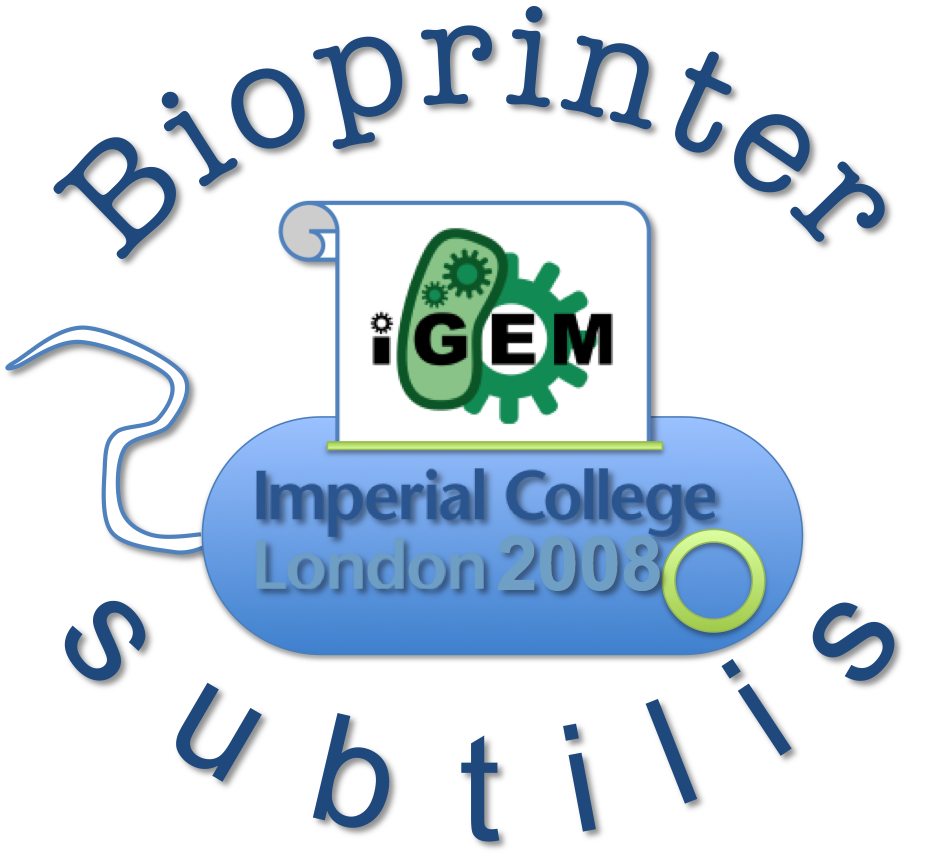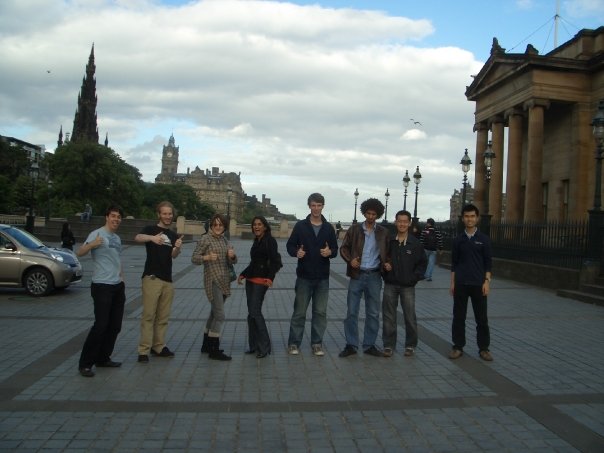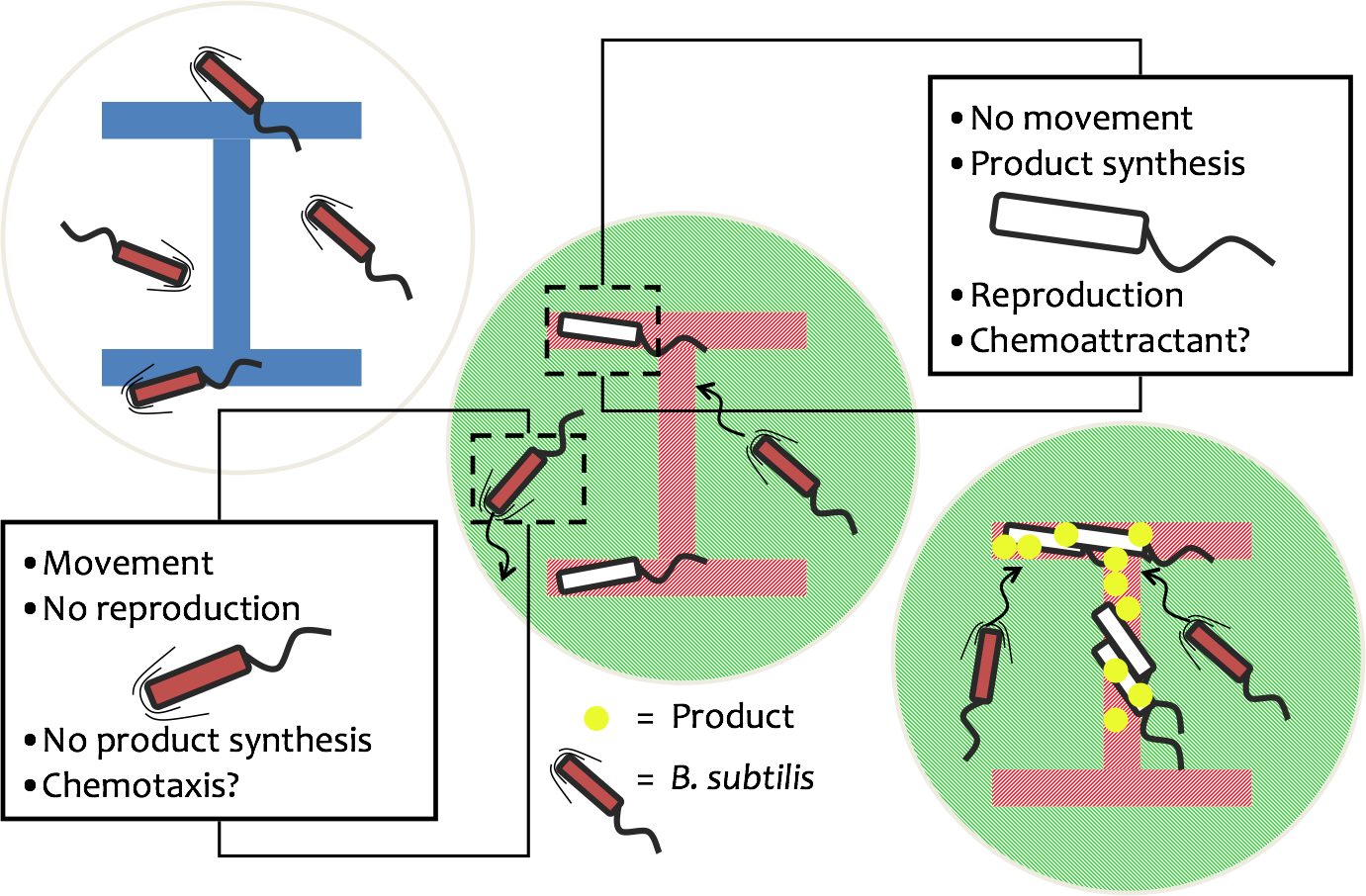Team:Imperial College
From 2008.igem.org
(Difference between revisions)
| Line 24: | Line 24: | ||
{| width="100%" | {| width="100%" | ||
| [[Image:Imperial_2008_Bioprinter_Cartoon.png |450px| Overview of our planned system]] | | [[Image:Imperial_2008_Bioprinter_Cartoon.png |450px| Overview of our planned system]] | ||
| - | | valign="top" |This diagram gives a basic overview of how we intend our system to work. In the starting phase, ''B. subtilis'' are motile and are not producing our desired product - they swim freely in the medium. If we want to construct a bio-scaffold with an "I" shape, we shine light of the correct wavelength (red is used as an arbitrary example here) in the desired shape onto the plate. | + | | valign="top" |This diagram gives a basic overview of how we intend our system to work. In the starting phase, ''B. subtilis'' are motile and are not producing our desired product - they swim freely in the medium. If we want to construct a bio-scaffold with an "I" shape, we shine light of the correct wavelength (red is used as an arbitrary example here) in the desired shape onto the plate. <br><br>Bacteria within this area will sense that light, and production of a clutch molecule (EpsE) will be triggered. This disengages the flagella from the motor quite quickly, rendering the ''subtilis'' stationary. <br><br>Coupled with EpsE is a gene for expression of peptides for our bio-scaffold material, so they will start producing them when in the area. Should any individuals stray from the correct area, the clutch should disengage and material synthesis should stop. We had also considered engineering ''B. subtilis'' to release a chemoattractant to bring in "reinforcements" and improve localisation, but this may be beyond the scope of our project. <br><br>3D bio-scaffold materials have many applications in tissue engineering and regenerative medicine. We hope to build up our bio-scaffold material pixel by pixel in the defined area - the basis of our 3D bioprinter. |
| - | <br><br>Bacteria within this area will sense that light, and production of a clutch molecule (EpsE) will be triggered. This disengages the flagella from the motor quite quickly, rendering the ''subtilis'' stationary. | + | |
| - | <br><br>Coupled with EpsE is a gene for expression of peptides for our bio-scaffold material, so they will start producing them when in the area. Should any individuals stray from the correct area, the clutch should disengage and material synthesis should stop. We had also considered engineering ''B. subtilis'' to release a chemoattractant to bring in "reinforcements" and improve localisation, but this may be beyond the scope of our project. | + | |
| - | <br><br>3D bio-scaffold materials have many applications in tissue engineering and regenerative medicine. We hope to build up our bio-scaffold material pixel by pixel in the defined area - the basis of our 3D bioprinter. | + | |
|} | |} | ||
<br clear="all"> | <br clear="all"> | ||
[[Team:Imperial_College/Test_Page | '''''Test page and storage for random parts - Also see here for intro to editing the Imperial Wiki''''']] | [[Team:Imperial_College/Test_Page | '''''Test page and storage for random parts - Also see here for intro to editing the Imperial Wiki''''']] | ||
{{Imperial/EndPage}} | {{Imperial/EndPage}} | ||
Revision as of 20:40, 1 August 2008
|
 "
"



